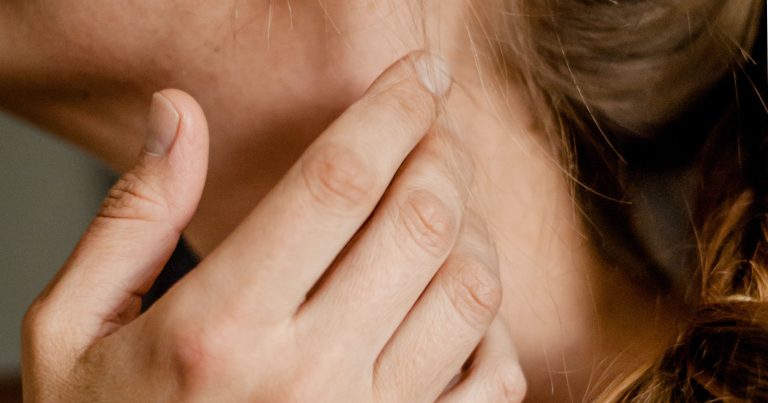Vocal manual therapist Lydia Flock answers five frequently asked questions about vocal massage.
Some singers swear by vocal massage as an essential maintenance tool to keep their voice in top shape. Others turn to it when experiencing vocal problems such as loss of range, tension or discomfort at the root of the tongue or jaw.
But there are still plenty of vocalists out there who, never having experienced vocal massage themselves, feel uneasy about the prospect of someone laying hands on their larynx. They may wonder if it’s safe and – perhaps most commonly – if it’s going to hurt?
To help answer these questions, BAST Training invited vocal manual therapist and coach Lydia Flock onto the Singing Teachers Talk podcast. Lydia works at the Voice Care Centre in London and runs a clinic in Oxford. Here’s a taste of what she had to say.
Is vocal massage scary?
The larynx is not a place where we’re touched frequently, but it’s just like any other part of the body.
The first time I touched another person’s larynx, when I was doing my training with Stephen King, I was so nervous. But now, it feels second nature. As you do it more often and get to know different people’s anatomy, you realise that it’s not as invasive as you might think. What I’ve learned doing this is that it’s not that scary of an area.
Is vocal massage painful?
I have had some clients ask me: ‘Is this going to hurt?’. And to that, I say ‘no!’. No, it doesn’t have to be painful. And I don’t believe it should be painful. Personally, if I went to a massage knowing that someone was going to recreate pain in my larynx, whether that’s a familiar pain or an unfamiliar pain, the thought of that makes me feel sick. I don’t feel like that is healing at all.
What is the manual therapist trying to achieve with vocal massage?
The aim is to create space and potentially stretch the muscles. I would say the main aim is to create space, potentially between the hyoid bone and the thyroid cartilage, above the hyoid bone in the submandibular region, or the cricothyroid.
We want to see if we can stretch the muscles, open up space and release any holding patterns. The result usually means it’s a bit more comfortable in terms of singing, speaking or swallowing.
Who would benefit from vocal massage?
If I were to generalise, I would say there are two camps. There are the elite singers, voiceover artists and very enthusiastic hobby singers who are coming for vocal maintenance sessions. They just want a little TLC for the voice and to ensure things are okay.
The other camp is people who are experiencing voice difficulties. Within that second group, there could be elite singers or professional voice users, but a lot of the time it’s people who don’t sing but are experiencing some speaking voice issues.
How often would a singer need vocal massage?
It’s difficult to give a hard and fast answer because it depends on so many different factors. Some people might come once a month for general maintenance, but if they’re working through something particularly challenging, it might be more. For some people, it might just be one and done. It just depends on lifestyle and what they’re experiencing.
Listen
Check out the full interview with Lydia on the Singing Teachers Talk podcast. She goes into more detail about vocal massage and explains where singing teachers can learn more about the practice and access training themselves.




